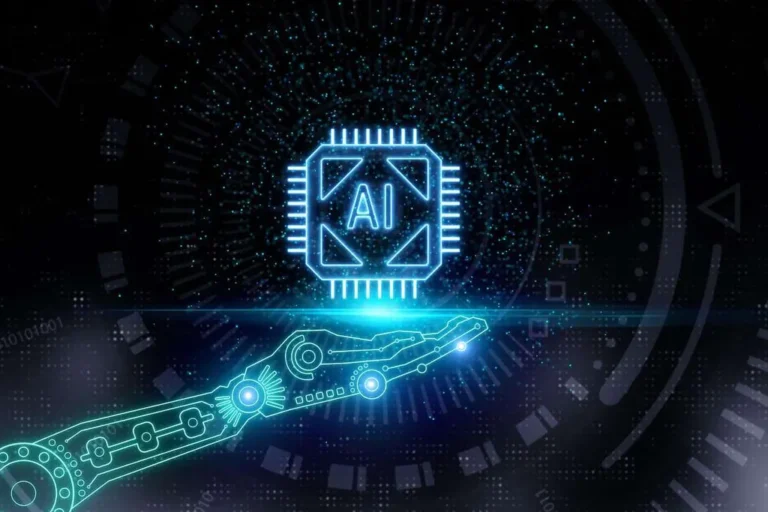DevSecOps can transcend the cultural features of DevOps to combine security groups into the software program improvement life cycle (SDLC) utilizing automation. This integration can cut back silos amongst teams and address safety devops predictions needs in software growth. The fusion of generative AI in DevSecOps transforms software program growth and cybersecurity practices. From automated testing, code analysis, and review to safe deployment and real-time monitoring, GenAI revolutionizes the DevSecOps panorama.
- It fosters a tradition of shared responsibility, the place developers and operations personnel work collectively all through the software lifecycle.
- These products make the most of the capabilities delivered by the software manufacturing unit and operational environments.
- The configuration turns into immutable, and might solely be updated by way of commits to a configuration administration repository.
How Devsecops Integrates Safety Into Devops Processes
Real-world events can be simulated, like servers that crash, exhausting drive failures, or severed network connections. Netflix is extensively known for its Chaos Monkey software, which workouts chaos engineering ideas. Netflix also utilizes a Security Monkey tool that appears for violations or vulnerabilities in improperly configured infrastructure safety teams and cuts any susceptible servers. The check phase makes use of dynamic software safety testing (DAST) tools to detect reside utility flows like user authentication, authorization, SQL injection, and API-related endpoints. The security-focused DAST analyzes an software in opposition to a list of identified high-severity points, similar to these listed within the OWASP Top 10. When security tools plug directly into developers’ current Git workflow, each commit and merge automatically triggers a safety check or evaluate.
Elevating Devops With Terraform Methods
While expanding your code-to-cloud safety coverage may help catch more vulnerabilities before manufacturing, having so many security instruments can create a disjointed security UX for builders, while requiring in depth upkeep. By integrating security tools directly throughout the IDE and Pull Requests, developers receive instant feedback on potential safety points, with out the necessity to context swap. This integration permits for quick adjustments and fosters a highly proactive security mindset. With safety specific tooling and processes throughout the SDLC, a DevSecOps pipeline helps practitioners design more secure products and catch security issues early within the product life cycle. A DevSecOps culture is a basic shift, changing outdated perceptions by making safety as core to the SDLC as writing code, working checks, and configuring providers. When something goes incorrect, it’s seen as a possibility to study and do it higher subsequent time.
Sneakily Integrating Safety Into Devops

The security areas of concern to handle in the course of the deploy phase are those that only occur in opposition to the live manufacturing system. For example, any variations in configuration between the manufacturing environment and the earlier staging and development environments must be thoroughly reviewed. Production TLS and DRM certificates ought to be validated and reviewed for upcoming renewal. Developers regularly set up and construct upon third-party code dependencies, which may be from an unknown or untrusted source. External code dependencies might by accident or maliciously embrace vulnerabilities and exploits. During the build phase, it is critical to review and scan these dependencies for any security vulnerabilities.
The Developer’s Guide To Devsecops Tools And Processes

DevSecOps impacts the SDLC by integrating security into every stage of the method, from planning to deployment, and monitoring after deployment. DevSecOps empowers growth teams to collaborate, automate, and continuously take a look at and monitor the security of the software program. Creating a DevSecOps tradition begins by making security everyone’s responsibility. Engineering groups considered security practices separate, versus integral, typically causing friction when builders saw safety as an obstacle to transport software program quick. Through collaboration, automation, and continuous improvement processes, DevSecOps presents a set of practices that help corporations embed security into each phase of improvement to construct safer, high-quality software at scale.
Accelerated Safety Vulnerability Patching

Firstly, the cyber threat landscape is constantly evolving, with cyberattacks changing into more refined and frequent. Traditional security testing methods, often conducted late in growth, are no longer enough. DevSecOps offers a proactive method by integrating security issues from the very starting of the software growth lifecycle and ensuring that safety is carefully aligned with developer efforts. DevSecOps builds upon the foundation of DevOps by adding security as a core precept. It integrates security testing all through the whole SDLC, making certain that safety issues are woven into the material of the software from the very beginning. This collaborative approach between growth, safety, and operations groups results in a more secure and efficient development process.
This collaboration goals to break down conventional silos and create a more efficient, streamlined workflow. The DevSecOps mannequin prioritizes safety and builds it into all elements and phases of the development process. The aim of the DevSecOps model is to determine and address security points and vulnerabilities early, and to embed safety practices from concept to deployment, making safety a systemic, integral precedence throughout the SDLC. DevSecOps is the evolution of DevOps by integrating security into each step of the software program development course of. DevSecOps is the practice of building and deploying software that’s more secure and compliant by making contributors answerable for code safety at each stage of improvement. DevSecOps is a mix of the words growth, safety, and operations, and is a framework for integrating security into each part of the software program growth lifecycle (SDLC).
It streamlines the software improvement course of by breaking down communication obstacles and automating tasks like building, testing, and deploying purposes. This permits for sooner supply cycles and a extra efficient growth workflow. Incorporating safety continuously throughout the SDLC helps DevOps groups ship secure applications with pace and quality.
By introducing maliciously modified code and data into the training units, attackers can manipulate the behavior of AI methods, leading to long-term impacts as the poisoned data persists inside machine studying fashions. When adopting DevSecOps, the most important aspect to suppose about is the cultivation of a security-centric culture within the improvement team. The developer shouldn’t understand safety solely as the accountability of the security professional alone. Instead, it ought to be embraced as a shared responsibility across the whole staff. The security-as-an-afterthought method couldn’t keep up with the adoption of these trending practices. Rather than integrating seamlessly into the Agile growth process, traditional security hindered its effectivity and agility.
DevOps aimed to bridge this divide by fostering a tradition of collaboration, communication, and shared responsibility between development and operations teams. This new strategy enabled organizations to automate and streamline their software improvement and deployment processes, decreasing cycle times and growing the frequency of software program releases. Additionally, higher collaboration between improvement, safety and operations teams improves an organization’s response to incidences and problems once they happen. DevSecOps practices scale back the time to patch vulnerabilities and free up safety teams to concentrate on larger worth work.
Next, based mostly on the team’s requirements, we set up the technical instruments required to trace acquisition requests. Then, we introduced the team to the new procedures that leveraged the technical instruments. From there, we gathered feedback from the staff and made necessary changes to make the system prepared for customers. The acquisitions team’s pipeline was additionally different from the standard software development pipeline.




